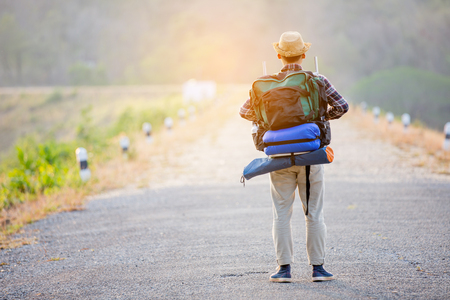Choosing Kid- and Pet-Friendly Trails
When planning a backpacking adventure with your family—whether you’re wrangling little ones or four-legged companions—the trail you choose can make or break the trip. The best family-friendly experiences start with trails that are accessible, safe, and enjoyable for both kids and pets. Begin by researching local and national parks that offer well-marked, maintained trails; check park websites or apps like AllTrails for up-to-date information and honest user reviews. Look specifically for trails labeled as “easy” or “family-friendly,” which typically feature gentle gradients, limited elevation gain, and shorter distances.
Before heading out, study trail maps carefully. Take note of total distance and estimated hiking time—remember, kids tire quickly and pets need plenty of breaks. Gauge the difficulty by considering factors like terrain (are there rocky patches, river crossings, or steep sections?) and weather conditions. For children, look for loop trails under five miles with clear landmarks—like lakes, waterfalls, or scenic overlooks—to keep them motivated along the way. For pets, especially dogs, be mindful of leash rules and check for pet hazards such as sharp rocks or water sources that may not be safe to drink from.
Always have a backup plan: if your chosen route proves too challenging mid-hike, know alternate exit points or shortcuts on the map. As you gather the family at the trailhead, review the route together and point out rest stops where everyone—including your furry friends—can recharge. Picking the right trail sets a positive tone for your entire outdoor adventure and ensures everyone gets to soak in those epic mountain views safely and happily.
Essential Family Gear and Packing Hacks
When you’re hitting the trails with kids or pets, smart packing can make the difference between a memorable adventure and a logistical headache. Focus on lightweight, multi-purpose gear that cuts down on bulk but doesn’t sacrifice comfort or safety. Think collapsible cookware, sleeping pads that double as picnic seats, and backpacks with built-in hydration systems. Every ounce counts when little legs (and paws) are along for the journey.
Kid-Approved Snacks and Food Storage
Hungry kids (and fur babies) can turn a scenic hike into a meltdown moment. Pack high-energy snacks that are both nutritious and fun—think trail mix with mini marshmallows, squeezable applesauce pouches, or bite-sized cheese sticks. For your pets, bring kibble in resealable bags and don’t forget collapsible bowls for water breaks. Keep everything organized in color-coded dry sacks so you can grab what you need without digging through your pack.
Quick Snack & Pet Essentials Packing Table
| Category | Must-Have Items |
|---|---|
| Kids | Granola bars, fruit leathers, peanut butter crackers, reusable snack containers |
| Pets | Kibble/treats, portable water bowl, leash/harness, pet waste bags |
Multi-Purpose Gear Recommendations
Choose items that serve double duty to keep packs light. A bandana can be a sun shield, napkin, or emergency sling; a lightweight tarp works as ground cover or rain shelter. Consider convertible clothing layers for all ages—zip-off pants and packable jackets keep everyone comfortable when temps shift.
Packing Hacks for the Whole Family
- Roll clothes instead of folding to save space.
- Use compression sacks for bulky sleeping bags or jackets.
- Distribute weight by letting older kids carry their own small packs with a few favorite items.
With a little planning and the right gear choices, your family backpacking trip will be lighter on your shoulders and bigger on fun—whether you’re navigating switchbacks with toddlers or sharing sunrise views with your four-legged friend.

3. Campsite Setup for Safety and Comfort
Step 1: Choose the Right Spot
Scout your campsite for flat, dry ground away from hazards like rivers, cliffs, or dense brush. Look for natural boundaries—like a stand of trees or large rocks—that can help contain curious kids and energetic pets. In established campgrounds, select sites with clear visibility so you can keep an eye on everyone.
Step 2: Define Boundaries
Use visual cues to set limits for play and exploration. Lay down brightly colored rope or use small flags to mark “safe zones.” For pets, consider a portable pet playpen or secure them with a sturdy leash attached to a fixed anchor. Discuss boundaries with kids so they know where they’re free to roam—and where they’re not.
Step 3: Arrange Sleeping Quarters
Set up family tents in the center of your chosen area, placing kids’ and pets’ sleeping pads closest to adults for quick nighttime check-ins. If you have a dog, bring their bed or blanket for familiarity and warmth. Keep extra blankets or sleeping bags handy for chilly nights in the mountains.
Step 4: Organize Food and Gear
Store all food and scented items in bear-proof containers or hang them high if you’re backcountry camping. Keep snacks in a designated spot that’s out of reach for both little hands and paws to prevent midnight scavenging. Stow gear neatly to avoid tripping hazards around camp.
Step 5: Create Cozy Gathering Spaces
Designate a central area for relaxing—lay out camp chairs or picnic blankets around your fire pit (if allowed). Use string lights or lanterns to brighten the space as dusk falls. This encourages everyone to stick together after dark while making it easier to supervise kids and pets alike.
Pro Tip: Nighttime Safety
Give each child a glow stick necklace or headlamp, and attach an LED collar light to your pet. Not only does this add a sense of adventure, but it also keeps everyone visible when the stars come out over your mountain retreat.
4. Fun and Games: Keeping Kids and Pets Engaged
Nothing lifts spirits around the campsite quite like a good game or shared adventure, especially when you’re backpacking with kids or four-legged companions. In the great outdoors, creativity is your best gear—think beyond screens and gadgets, and tap into classic low-tech fun that sparks curiosity and connection with nature. Here are some ideas to keep everyone energized and entertained during your family-friendly outdoor getaway.
Trail Games with an American Twist
Bring the trails to life with games inspired by classic American pastimes and local landscapes. “I Spy” gets a wild upgrade when you use native flora or wildlife, and “20 Questions: Outdoor Edition” encourages everyone to learn about local animals, rocks, or trees. For older kids, try “Trail Charades,” acting out animals or campfire stories as you hike.
Nature Scavenger Hunt: Regional Edition
Turn your hike or campsite into a mini-adventure with a scavenger hunt tailored to the local environment. Use the table below for inspiration based on popular U.S. camping regions:
| Region | Scavenger Hunt Finds | Local Flair Challenge |
|---|---|---|
| Pacific Northwest | Pinecones, mossy rocks, fern leaves | Spot a banana slug! |
| Southeast | Spanish moss, acorns, songbird feathers | Listen for a woodpecker’s drumming |
| Southwest | Cactus flower (look, don’t touch!), lizard tracks, unique stones | Mimic a coyote howl at sunset |
| Northeast | Maple leaf, birch bark, squirrel sighting | Find three different bird calls |
Paws & Play: Pet-Friendly Activities
Don’t forget your furry trailblazers! Simple games like fetch with sticks (in open areas), scent trails using treats, or “follow the leader” hikes help pets burn energy and stay engaged. Always be mindful of leash laws and wildlife sensitivity in U.S. parks—safety first for both pets and local critters.
Campsite Classics for All Ages
No campout is complete without time-honored favorites: teach kids how to skip stones on a nearby stream, build fairy houses from twigs and leaves, or organize a friendly sack race with pillowcases from your pack. As dusk falls, gather around the fire for shadow puppets against the tent wall or tell tall tales starring legendary American creatures like Bigfoot or Jackalope.
The beauty of outdoor play is its simplicity. By weaving in local elements and fostering imagination, you’ll create lasting memories that outshine any Wi-Fi signal—and set the stage for a lifelong love of wild places.
5. Leave No Trace as a Family
Introducing your kids or furry companions to the great outdoors is the perfect chance to teach them about respect for nature and the principles of Leave No Trace. As a family, embracing these ethics not only protects beautiful campsites but also helps preserve wild places for future generations. Start by explaining to your kids why it’s important to pack out all trash—even those tiny snack wrappers that seem to multiply during a hike. Make cleaning up a fun group activity: turn it into a scavenger hunt for litter, or see who can find the smallest piece of forgotten trash.
When camping with pets, remember their impact on the environment too. Always use designated waste bags and dispose of pet waste properly. Kids love helping out with responsible pet care, so let them be in charge of carrying biodegradable bags or making sure your dog stays on established trails and away from fragile plants or wildlife habitats.
Set clear examples by sticking to marked paths, respecting quiet hours, and leaving natural treasures—like pretty rocks or wildflowers—where you found them. This teaches children that outdoor spaces aren’t just playgrounds; they’re home to animals, insects, and delicate ecosystems that deserve our protection.
For a more immersive learning experience, share stories about local wildlife you might encounter or talk about how small actions, like not feeding animals or securing food at night, help keep both critters and campers safe. These lessons stick when you connect them to real-life sights and sounds along the trail.
By making Leave No Trace a family value, you’ll cultivate young stewards of the outdoors who understand that every adventure comes with responsibility. These early lessons spark lifelong habits—and create richer memories for every member of your backpacking crew.
6. Troubleshooting: Weather, Wildlife, and Wobbles
Even the best-laid plans can be upended by Mother Nature or the unpredictability of kids and pets on the trail. Staying prepared is your best defense against these curveballs. Here’s how to keep your crew safe and spirits high when things don’t go as planned.
Sudden Weather Changes
Mountain weather can shift in an instant. Always check the forecast before heading out, but pack rain gear and extra layers no matter what. If a storm rolls in, stay calm—kids and pets will take their cues from you. Find shelter under sturdy trees (avoiding isolated tall ones during lightning), put on rain jackets, and make it a mini adventure by telling stories or playing simple games while you wait it out.
Pro Tip:
Keep a “go bag” with snacks, water, headlamps, and emergency blankets easily accessible for quick access if you need to move fast.
Wildlife Encounters
From chipmunks to deer—or even the occasional bear—wildlife is part of the backcountry experience. Teach kids to observe from a distance and never feed animals. Keep dogs leashed at all times; a curious pup can get into trouble quickly. Store food in bear-proof containers or hang it from a tree away from camp. Make noise as you hike to avoid surprising animals—singing silly trail songs is both fun and effective.
Nervous Kids or Energetic Pups
New experiences can cause anxiety for little ones or excessive excitement for four-legged friends. Reassure nervous kids with familiar routines—a favorite bedtime story or stuffed animal helps bring comfort. For energetic pets, plan frequent breaks for play and exploration, but also practice calm time at camp so they learn to relax when needed.
Keeping Everyone Safe
Your number one job is to maintain a safe environment. Review basic safety rules often: stay together, watch out for hazards like poison ivy or unstable rocks, and respect wildlife boundaries. Carry a well-stocked first aid kit and know how to use it—for humans and pets alike. Remember: It’s okay to turn back if conditions become unsafe. Every trip is a chance to build resilience—and memories—even when things don’t go exactly as planned.


